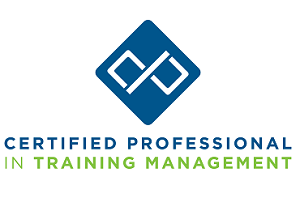At a time when the 007 License to Shrill is awarded to anyone who speaks before listening, the likelihood of the workplace’s inundation with unsolicited free expression increases by a factor of 10. As denizens of a global, 24/7, highly vocal communication cycle, where we are taught to talk more, ridicule differences, be dismissive of facts, and assume a linear line of reasoning that is either black or white, it is time to revisit the fine art of listening in authentic, holistic individual development. The addendum is that we should not see listening as “just” a leadership skill but as a productivity and performance skill.
At its most basic level, the art of listening has not really changed that much. The basic skills of listening, paraphrasing, asking open-ended questions, giving feedback and being silent, while products of an earlier time, are still relevant, relatively speaking. The fundamental shift in the relative use of these skills comes in the way we measure time. These skills were crafted when time was measured by analog and not digital technology. The pace was set by shift rather than by project, and communication occurred using rotary phones, not touch screens. Work interactions had a certain predictability so that the practice and use of these “soft skills” were meant to strengthen the formal connection between supervisor and employee.
The context that created the need for those skills began to change in ways that enabled us to forsake the art of listening. It would not be fair to say that listening, as a component of communication, went away thanks to the emergence of social media. However, it is fair to say that before the curtain was completely pulled down, the vocal temperature in the workplace rose to un-listenable levels — so much so that the reemergence of the art of listening and its requisite skills must now occur in a different and louder workplace context.
How to Dial Down the Elevated Carnage
“Talk loud, talk fast, talk down and talk non-stop” is modeled as the way to convey an opinion, especially one void of facts or distorted due to personal insecurity. It’s important to know how to use feedback, open-ended questions and non-verbal gestures:
To Stop the Onslaught, Use Open-ended Questions
When trapped in elevated carnage, it is important for communicators to know when the listener is “this close” to tuning out. After all, everybody wants to be heard. Say things like, “You’re making it difficult for me to hear you right now” and, “While I am listening to you say a lot of things, what is it you really want me to know?”
To Catch Attention, Use Non-verbal Gestures
The time-out signal is an effective gesture to grab the other person’s attention and pause the conversation.
Focusing the conversation using these techniques helps the communicator know that the listener is not tuning him or her out.
How to Draw Their Eyes Away From the Text
The mobile phone is a remarkable device with boundary-less hypnotic qualities. When observing people who are engaged in a no-eye-contact conversations while enthralled with the endless software choices in the modern workplace, it is easy to understand why communication problems are so common. Here’s how you can make it better:
Use Non-verbal Gestures to Close the Gap
Moving closer can create a helpful level of discomfort.
Use Non-verbal Gestures to Create a Distraction
Wave your hand just outside the speaker’s peripheral vision.
To Gain Attention, Use Humorous Paraphrasing
Being misheard is a surefire way of catching someone’s attention. Try saying something like, “So, what I hear you saying is that you wish you could have had the part of the butterfly in your sixth-grade spring play, not the mango leaf.”
How to Separate the Clashing Voices
While it is true that everyone wants to be heard, a problem occurs when everyone wants to be heard at the same time. Here are some helpful tips to use during a team meeting or conversation with multiple people:
-
- To gain attention, use silence to create discomfort.
- To separate voices, use paraphrasing by proxy. Ask one team member to restate what another said as a way of ensuring clarity. (“Dan, can you restate what you just heard Sarah say?”)
- To reward listening, use feedback. (“I like the way you all stopped talking long enough to listen to each other.”)
If it’s true that everything old is new again, then it’s time to update the old listening skills training requirement. When the “all clear” is given for returning fully to the workplace, whether solely in person or with some remote employees, the ability to listen will be a necessary skill for returning to “normal.”


